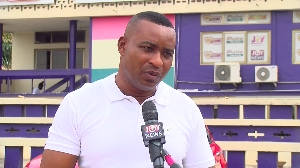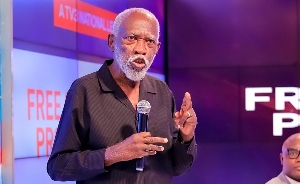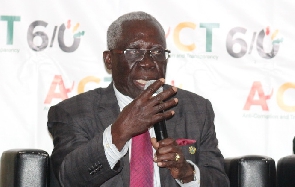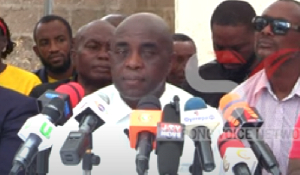 The wood energy pathway in Ghana involves various actors & offers employment to more than 2m people
The wood energy pathway in Ghana involves various actors & offers employment to more than 2m people
Overharvesting of wood-fuel (fuelwood, charcoal) is a major cause of land degradation in sub-Saharan Africa.
The wood energy pathway in Ghana involves various actors and offers employment to more than two million people, in both urban and rural areas. As of today, 73 percent of the rural population in Ghana relies on wood-fuel for cooking and heating purposes.
In the urban areas this percentage is limited to 25 percent. Besides being used for cooking and heating purposes at the household level and within public institutions (schools, hospitals), wood-fuel is also used for productive, commercial activities such as food processing industries.
Reliance on traditional biomass is quite land-intensive. Supplying a household for one year can require more than half a hectare of land (IPCC, 2019). Wood-fuel overexploitation is often due to a lack of efficient tools/technologies to convert feedstock into fuel or directly into energy.
This situation implies an urgent need for coordinated actions between the wood-energy and Forest Landscape Restoration (FLR) sub-sectors in Ghana. Urgent efforts are needed to deeply modernise and formalise the existing wood-energy pathways, as well as to revise Forest Management Systems, National Reforestation and Afforestation Plans – which include forest landscape restoration and rehabilitation actions, dedicated forest plantations, and plans for native forest conservation.
To this end, a National Dialogue on Wood Energy and Forest Landscape Restoration in Ghana, organised by the United Nations Food and Agriculture Organisation (FAO), ended yesterday.
The two-day event – funded by the German development agency, GIZ, in collaboration with Global Bioenergy Partnership (GBEP) and Forest and Farm Facility – had the objective of raising awareness and dialoguing among stakeholders from both FLR and bioenergy communities on the positive contribution of sustainable bioenergy to FLR and vice versa, with a view to intensifying opportunities for collaboration and developing a joint agenda for action.
The Director-Renewable and Alternate Energy at the Ministry of Energy, Wisdom Togobo, explained to the gathering that biomass and firewood account for 40.5% of the total energy consumed in the country, while charcoal accounts for 17.9% of total energy consumed.
Mr. Togobo juxtaposed this with total electricity consumed, which he indicated is 14.9% – the implication being that charcoal consumption is more than the entire volume of electricity that the nation produces. He indicated that government is determined to reduce the overdependence on wood-fuel by promoting LPG consumption, which is in line with the Paris Agreement that Ghana is party to.
However, considering the urban-rural dynamic of the country, Togobo believes it would be impossible to achieve a total migration to LPG or even electricity. He noted that to produce one kilogramme of charcoal requires between 6-12 kilogrammes of wood; and observed also that studies show that households want charcoal particularly from the savannah region, which accounts for massive deforestation.
Togobo further said data show that between 2008 and 2018 demand for charcoal went up by more than 40%, and the trend is that households are moving away from firewood to charcoal. He also stated that the manufacturing of charcoal is an income-generating venture for rural households. However, a significant chunk of the profit is eroded by transportation and other logistics costs.
He finally indicated that the Ministry of Energy has developed a Renewable Energy Masterplan and called for support from development partners to realise its propositions.










